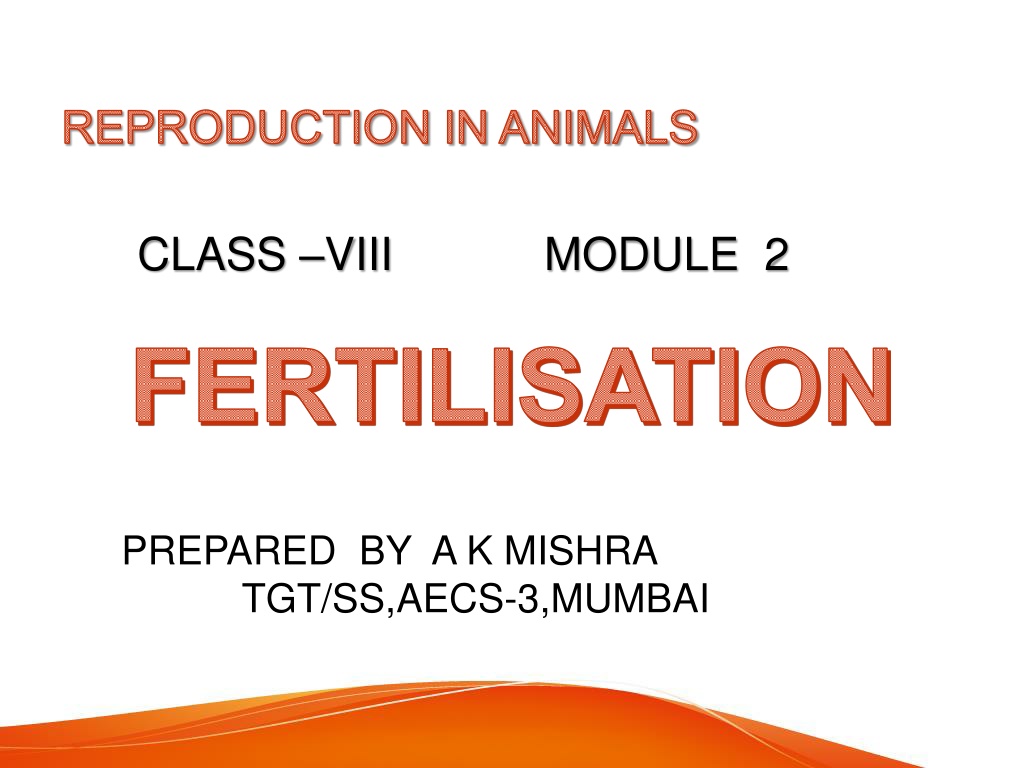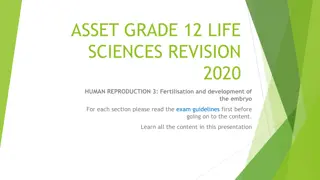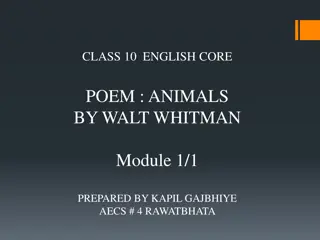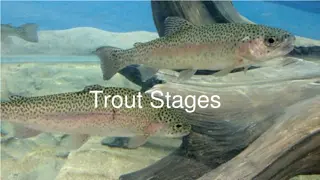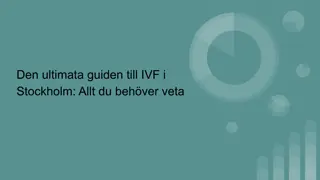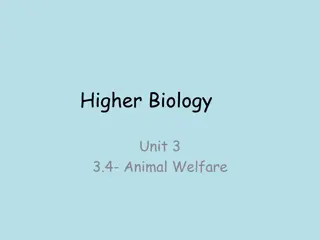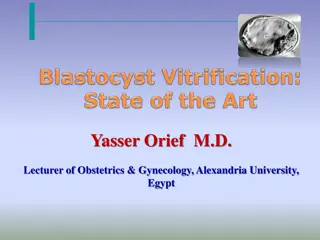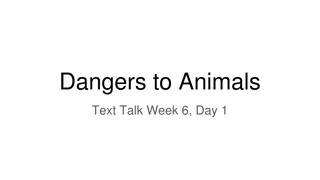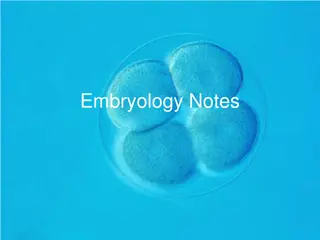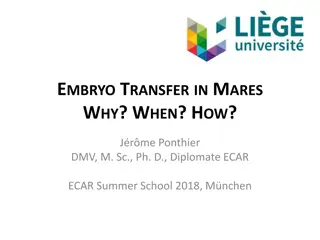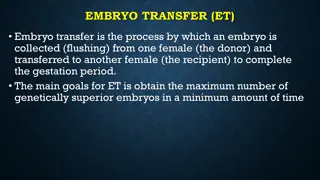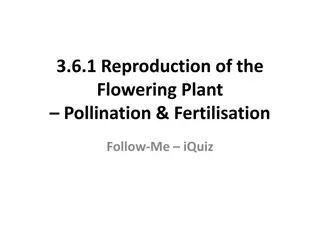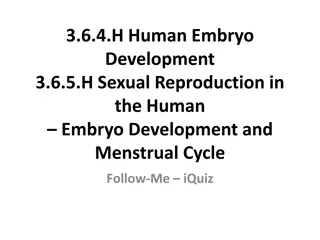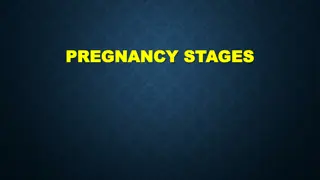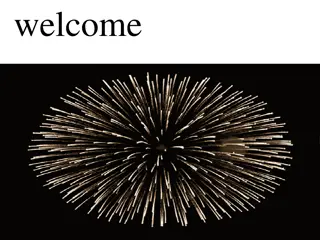Understanding Fertilisation and Embryo Development in Animals
The process of reproduction in animals involves the crucial step of fertilisation, where a sperm fuses with an egg to form a zygote. There are two main types of fertilisation - internal and external. Internal fertilisation occurs within the female body, as seen in humans, cows, and other animals. On the other hand, external fertilisation happens outside the female body in aquatic animals like fish and frogs. Techniques like IVF or in vitro fertilisation allow for fertilisation outside the body, with resulting embryos developing into babies. The zygote formed after fertilisation transforms into an embryo, which gradually develops into various body parts until birth.
Download Presentation

Please find below an Image/Link to download the presentation.
The content on the website is provided AS IS for your information and personal use only. It may not be sold, licensed, or shared on other websites without obtaining consent from the author. Download presentation by click this link. If you encounter any issues during the download, it is possible that the publisher has removed the file from their server.
E N D
Presentation Transcript
REPRODUCTION IN ANIMALS CLASS VIII MODULE 2 FERTILISATION PREPARED BY A K MISHRA TGT/SS,AECS-3,MUMBAI
* The first step in process of reproduction is the fusion of a sperm and an ovum. When sperms come in contact of with an egg ,one of the sperms may fuse with the egg. Such fusion of the egg and the sperm is called fertilisation. During fertilisation , the nuclei of the sperm and egg fuse to form a zygote.
TYPES OF FERTILISATION 1. INTERNAL FERTILISATION 2. EXTERNAL FERTILISATION INTERNAL FERTISATION Fertilisation which takes inside the female body is called internal fertilisation. Example- Humans ,Cows ,Dogs ,Hens etc
IVF OR in vitro fertilization The fertilisation of an egg that takes place outside the body in a test tube or any other apparatus is known as IVF or in vitro fertilisation.
EXTERNAL FERTILISATION The type of fertilisation in which the fusion of a male and a female gamete takes place outside the body of the female is called external fertilisation. Example: 1. Aquatic animals such as fish,star fish. 2. Frog etc.
Test-tubes Babies In this technique freshly released egg and sperms are put together for a few hours for IVF. In case fertilisation occurs, the zygote is allowed to develop for about a week and then placed in the mother s uterus. Complete development takes place in the uterus and the baby is born like any other normal baby. Babies born through this technique are called test-tube babies.
DEVELOPMENT OF EMBRYO Fertilisation results in formation of zygote which begins to develop into an embryo. The zygote divides repeatedly to give rise to a ball of cells. The cells then begin to form groups that develop into different tissues and organs of the body.
This developing structure is termed an embryo. The embryo gets embedded in the wall of the uterus for further development. The embryo continues to develop in the uterus. It gradually develops body parts such as hands,legs,head,eyes,ears etc.
The stage of the embryo in the which all the body parts can be identified is called a foetus. When the development of the foetus is complete, the mother gives birth to the baby.
INTERNAL FERTILISATION IN HEN Internal fertilisation takes place in hen also. Soon after fertilisation ,the zygote divides repeatedly and travel down the oviduct. As it travels down, many protective layers are formed around it. The hard shell that of egg is one such protective layer.
HENS EGG After the hard shell is formed around the developing embryo ,the hen finally lays the egg. The embryo takes about 3 weeks to develop in to chick.
THANK YOU END OF M2
